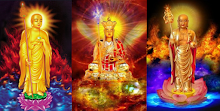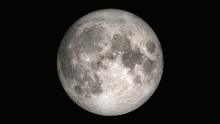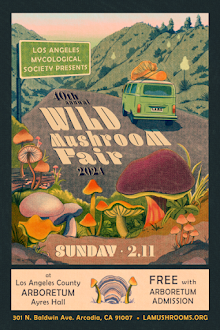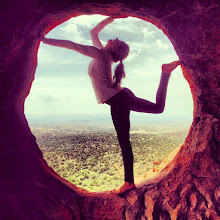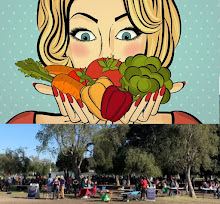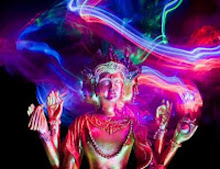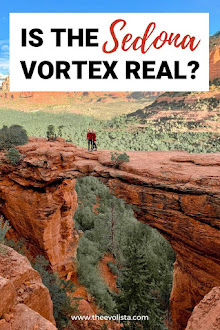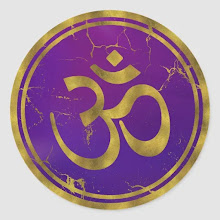Text: Seven Jaini (Wisdom Quarterly) / India photos: Dr. Bounthanh Sinavong

While India is a majority Hindu nation (which regards the Buddha and Buddhism as a part of that tradition) and the "largest democracy in the world," it also has a sizable Muslim population of more than 100 million. And it was the Muslims who built the iconic Taj Mahal as a dedication of love from an emperor to his deceased beloved. The amazing architecture mimics an Islamic vision of [a] heaven. This effect is hard to appreciate unless one visits and does so in the morning before it opens. The area frequently experiences a morning fog, giving the glimmering appearance of the minarets and dome at first light the illusion of floating on a cloud. This special effect would not seem to be an accident and may explain why it was built in out of the way Agra. It is a world heritage site and is equally impressive seen from above and due to its interior.

While India is a majority Hindu nation (which regards the Buddha and Buddhism as a part of that tradition) and the "largest democracy in the world," it also has a sizable Muslim population of more than 100 million. And it was the Muslims who built the iconic Taj Mahal as a dedication of love from an emperor to his deceased beloved. The amazing architecture mimics an Islamic vision of [a] heaven. This effect is hard to appreciate unless one visits and does so in the morning before it opens. The area frequently experiences a morning fog, giving the glimmering appearance of the minarets and dome at first light the illusion of floating on a cloud. This special effect would not seem to be an accident and may explain why it was built in out of the way Agra. It is a world heritage site and is equally impressive seen from above and due to its interior.
The stupa of the Great Enlightenment (Maha-bodhi) in Buddhagaya (Bodhgaya), budh and bodh both referring to the great "awakening" that took place here.
 (Paranormal photograph of the Buddha at Bodhgaya) The site is a reconstruction of many disparate artifacts found by British archaeologists and may not be the exact site at all, having been consume by the forest in the ensuing centuries and obscured by Muslim invasions (which killed the original Bodhi tree, except that its descendant survives in Sri Lanka, having been taken there as a sapling and recognized by science as the oldest authenticated tree in existence. Of course there are trees thought to be older, such as the bristle cone pines of California, but they are not historically documented. The original tree's descendant was then replanted at this site, then speculated to be the original site of the enlightenment. So while the site may have been lost, the original tree was in a sense preserved.
(Paranormal photograph of the Buddha at Bodhgaya) The site is a reconstruction of many disparate artifacts found by British archaeologists and may not be the exact site at all, having been consume by the forest in the ensuing centuries and obscured by Muslim invasions (which killed the original Bodhi tree, except that its descendant survives in Sri Lanka, having been taken there as a sapling and recognized by science as the oldest authenticated tree in existence. Of course there are trees thought to be older, such as the bristle cone pines of California, but they are not historically documented. The original tree's descendant was then replanted at this site, then speculated to be the original site of the enlightenment. So while the site may have been lost, the original tree was in a sense preserved.India's greatest contribution to the world is the Buddha's message (Dharma), which could not have arisen elsewhere. Like many of the seers (rishis), meditating ascetics (yogis), and inspired teachers -- mystics and scholars alike -- the Buddha arose at a time that made his message possible. He was born in greater-India (called Bharat), an expanding empire of allied kingdoms and republics that included parts of the Near East. The established consensus-history is convoluted enough, but Dr. Ranajit Pal alleges a great of historical fraud by Europeans and reveals a more sensible history that has yet to gain acceptance (ranajitpal.com).
Although it is not on the "Buddhist circuit" as a main site, Rajgir (Rajagriha/Rājagṛha, "royal city" or fortress) is a magic place ringed by seven hills on the Gangetic plain. It is the setting for many sutras. Particularly notable is Vulture's Peak (Griddhkuta), misleadingly named since there were never any vultures there but merely rocks that in certain light look like the gangly scavengers. It is a wonderful peak atop which to meditate, as these monks are seen doing.
 Rajgir, which Vulture's Peak looks down on, is where "Buddhism" officially began. Whereas the Buddha's message (Dharma) was set forth in Sarnath with the Turning of the Wheel Sutra, near the famous holy city of Varanasi (ancient Benares), the established conventions of a religion were established with the First Council. And that took place on a nearby hill seen in the distance, near where the great elder Maha Kassapa had a cave (Pipphali). This hill, just to the right of the entrance to the ring of seven hills of Rajgir proper, has a cave called Saptparni where a great number of enlightened elders gathered to codify the tradition. Outside of the entrance to the city is the famous Bamboo Grove (Veluvana) monastery.
Rajgir, which Vulture's Peak looks down on, is where "Buddhism" officially began. Whereas the Buddha's message (Dharma) was set forth in Sarnath with the Turning of the Wheel Sutra, near the famous holy city of Varanasi (ancient Benares), the established conventions of a religion were established with the First Council. And that took place on a nearby hill seen in the distance, near where the great elder Maha Kassapa had a cave (Pipphali). This hill, just to the right of the entrance to the ring of seven hills of Rajgir proper, has a cave called Saptparni where a great number of enlightened elders gathered to codify the tradition. Outside of the entrance to the city is the famous Bamboo Grove (Veluvana) monastery. Jainism: an extreme Buddhist school?
 This was King Bimbisara's capital, and it is equally important to the Jains, whose tradition parallels Buddhism to such a degree that some scholars suggest it is an offshoot or early school of Buddhism, distinct in adhering to severe austerities and nonharming (ahimsa). Indeed, the story of its founder has so many similarities to the Buddha's that one is hard pressed to imagine it all coincidental. (For instance, the Buddha hasn't always been popularly called "the Buddha." It's a title, and there have been many others applied to him, including "Great Hero," or Mahavira, which just happens to be the name of Jainism's founder). Rather, it's as if some early Buddhists were trying to reinvent the Dharma in more Brahminical/Hindu-friendly terms -- idolizing the yogic ideals of asceticism, complete renunciation, ahimsa, vegetarianism, equality (Jainism allegedly had nuns before Buddhism did) and utter detachment (non-possessiveness). It is telling that ancient Jain texts do not mention the Buddhists, whereas Buddhist texts do mention the Jains, referred to as Niganthas or "non-possessors."
This was King Bimbisara's capital, and it is equally important to the Jains, whose tradition parallels Buddhism to such a degree that some scholars suggest it is an offshoot or early school of Buddhism, distinct in adhering to severe austerities and nonharming (ahimsa). Indeed, the story of its founder has so many similarities to the Buddha's that one is hard pressed to imagine it all coincidental. (For instance, the Buddha hasn't always been popularly called "the Buddha." It's a title, and there have been many others applied to him, including "Great Hero," or Mahavira, which just happens to be the name of Jainism's founder). Rather, it's as if some early Buddhists were trying to reinvent the Dharma in more Brahminical/Hindu-friendly terms -- idolizing the yogic ideals of asceticism, complete renunciation, ahimsa, vegetarianism, equality (Jainism allegedly had nuns before Buddhism did) and utter detachment (non-possessiveness). It is telling that ancient Jain texts do not mention the Buddhists, whereas Buddhist texts do mention the Jains, referred to as Niganthas or "non-possessors." Jainism is an examples of one of the extremes the Middle Path avoids -- self-mortification and completely abandoning the world. Refusal to be in the world while not of it means an uneasy coexistence, not coming to terms with the world. This is most evident in that orthodox (Digambara) Jain monks famously go about in the nude, refusing to possess even robes. And it is this uncompromising allegiance to extremes that has meant that unless one takes a religious studies class in college, one has probably never heard of Jainism outside of India.
 Every Buddhist pilgrim to India should see Rajgir with its ancient hot springs and modern gondola that climbs up to a Japanese temple high on a neighboring hill. (And what trip to India would be complete without seeing the jewel of Islam that is the Taj Mahal and the site of the Buddha's enlightenment?) After all throughout Asia, India, not Israel, is the "holy land." The historical Buddha spent a great deal of time in Rajgir meditating, preaching, and establishing the Dharma far from his ancestral kingdom of the Shakya Clan, just as other buddhas (and, interestingly, other mahaviras) had done in the distant past. MORE PHOTOS
Every Buddhist pilgrim to India should see Rajgir with its ancient hot springs and modern gondola that climbs up to a Japanese temple high on a neighboring hill. (And what trip to India would be complete without seeing the jewel of Islam that is the Taj Mahal and the site of the Buddha's enlightenment?) After all throughout Asia, India, not Israel, is the "holy land." The historical Buddha spent a great deal of time in Rajgir meditating, preaching, and establishing the Dharma far from his ancestral kingdom of the Shakya Clan, just as other buddhas (and, interestingly, other mahaviras) had done in the distant past. MORE PHOTOS
 Every Buddhist pilgrim to India should see Rajgir with its ancient hot springs and modern gondola that climbs up to a Japanese temple high on a neighboring hill. (And what trip to India would be complete without seeing the jewel of Islam that is the Taj Mahal and the site of the Buddha's enlightenment?) After all throughout Asia, India, not Israel, is the "holy land." The historical Buddha spent a great deal of time in Rajgir meditating, preaching, and establishing the Dharma far from his ancestral kingdom of the Shakya Clan, just as other buddhas (and, interestingly, other mahaviras) had done in the distant past. MORE PHOTOS
Every Buddhist pilgrim to India should see Rajgir with its ancient hot springs and modern gondola that climbs up to a Japanese temple high on a neighboring hill. (And what trip to India would be complete without seeing the jewel of Islam that is the Taj Mahal and the site of the Buddha's enlightenment?) After all throughout Asia, India, not Israel, is the "holy land." The historical Buddha spent a great deal of time in Rajgir meditating, preaching, and establishing the Dharma far from his ancestral kingdom of the Shakya Clan, just as other buddhas (and, interestingly, other mahaviras) had done in the distant past. MORE PHOTOS- Buddhist Circuit map (adventures.worldnomads.com)
























